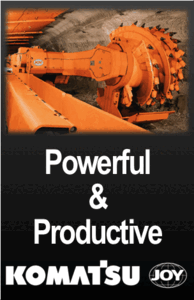
 











|
Signature Sponsor


By Kathleen White
January 25, 2024 - There’s no limit to what can be achieved with artificial intelligence, especially when it comes to improving health and safety standards across the globe. Mining has historically been known as one of the most dangerous industries to work in – to this day we hear of fatal mining incidents worldwide, with many more than the total number reported expected to occur each year.
Wrapping your head around the technological advancements that could make mining safer – and perceiving the potential future of the industry – is quite a feat, even if you’re in this line of work yourself. In this guide, we’ll discuss a few of the key ways that artificial intelligence can be used to enhance current safety practices, breaking down exactly how they’ll work, and what they have the potential to achieve.
Autonomous Machinery
With the use of AI, we have the power to make decisions without putting ourselves at risk of physical harm. We can program machinery to do much of the work that once had to be performed by human hands, choosing exactly which actions they should take inside a mine, while controlling their movements remotely. This not only makes everyday mining practices more efficient and cost-effective, but much safer too.
Most mining accidents are attributed to cave-ins, explosions and poor air quality. When we employ the use of AI, the risk of a workforce being harmed during such accidents reduces significantly. Intelligent machinery can drill, blast, and haul various materials and equipment in and out of the mine, so that workers don’t have to put themselves in harm's way.
Safety Monitoring
When human skill is required on a task or project, AI can be used to screen the environment in order to ensure that a mine is as safe as possible for workers. For example, it can be used to map out and detect uneven terrain underground, so that workers have an understanding of the precautions they should take when they head inside. AI technologies can also be used to detect gas, fire and smoke in mines, long before they begin to pose any risk to workers.
Many site managers make use of such monitoring technologies to ensure that personal protective equipment (PPE) is being used by their workforce inside the mines. It works as a kind of surveillance, in which the technology uses AI camera systems to detect whether or not workers are wearing the required items, such as hard hats, safety glasses and respiratory shields.
Consistent, Extensive Training
According to the Mine Safety and Health Administration (MSHA) of the US, in 2023, five workers died in their first week of working at their mine, with two of the fatalities occurring on the workers’ first days. It’s clear that some of these fatalities can be attributed to a lack of experience, showing that more extensive training could be critical in making mining a safer practice.
With the help of AI, it becomes much easier for managers and industry leaders to develop stringent safety training programs, as they have access to a wealth of knowledge, as well as constant updates on industry trends and insights. With the ability to analyze this data at the click of a button, it makes it easier for leaders to assess exactly how they’re performing in comparison to other mining companies, as well as identify any gaps in their workforce’s knowledge or opportunities for further training.
This means that those responsible for ensuring the safety of a team can create learning resources as and when they’re needed, on a consistent, regular basis, with the most up to date information and training methods. Ultimately, the more extensive the training programs delivered, the greater a workforce’s understanding will be of the best safety practices.
What Does This Mean For the Future of Mining?
Ultimately, the introduction of AI means that more and more mining practices can begin to be automated, and as a result, the safety risk to humans will only decrease more drastically as time passes and the industry progresses.
Besides this, AI is likely to contribute positively to the industry in a number of ways, by increasing mine productivity and ESG scores (a measure of sustainability and ethical performance), and helping to identify more sustainable mineral sources for mining.
Kathleen White works as an independent business analyst for several industries. She completed her degree in Business and Management at the University of Bristol, achieving a First-Class Honours. She enjoys writing in her spare time to share what she has learned, hoping to benefit other businesses.
|
 






|